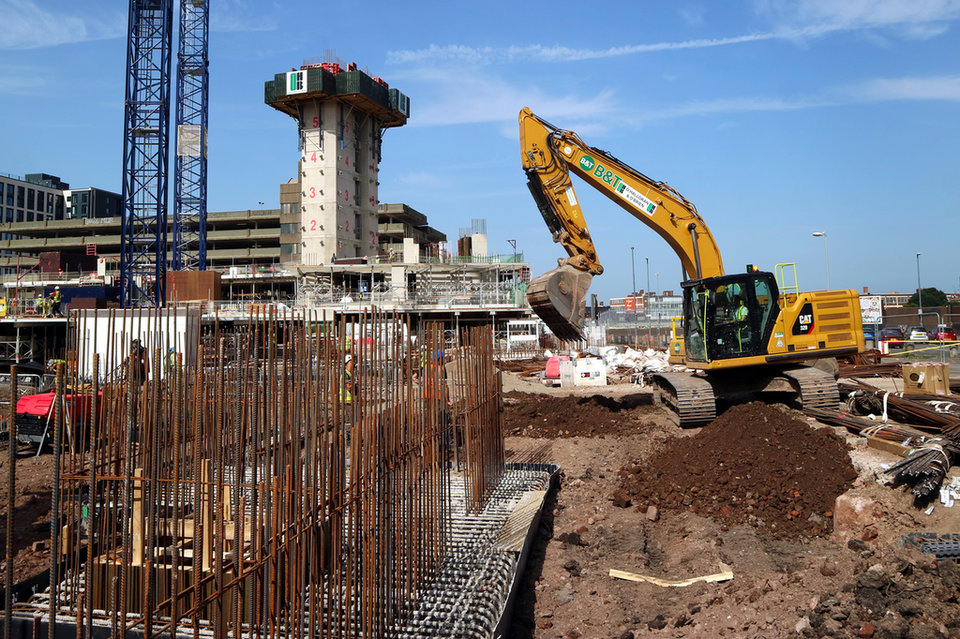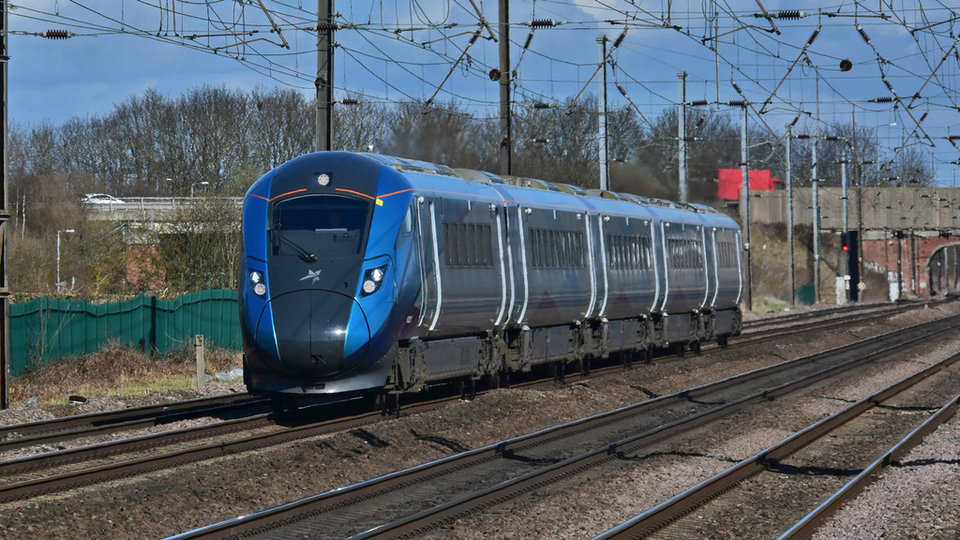Journey times between London and Glasgow or Edinburgh could be as little as three hours and ten minutes
Scotland is ideal for HS2
Founded in 2006 by leading transportation expert Jim Steer, Greengauge 21 is a not-for-profit organisation that aims to promote the benefits of high-speed rail to the economies and decarbonisation ambitions of the UK’s nations. In a recent report, the group called on the government to consider the possibility of extending HS2 into Scotland.
It said that through a programme of upgrades to existing lines, combined with new dedicated sections of the high-speed line, incorporating Scotland would “boost capacity and meet the projected demand for both freight and passenger travel, whilst cutting journey times”.

Greengauge 21 CEO Jim Steer Image: Jim Steer
The report said journey times between London and Glasgow or Edinburgh could be as little as three hours and ten minutes, with journeys saving 45,000t of CO2 emissions annually by taking freight off the roads.
“With faster rail services and an expanded set of direct city-to-city cross-border connections, we’d expect the high annual rail passenger growth rate trend of the pre-2020 period to resume,” says Steer. “This will mean significant levels of mode switching from short-haul air journeys and long-distance car trips.”
Although the popularity of short-haul flights between London and Scotland appears to be falling, the issue is still of concern in the context of climate change.
According to UK Government figures, greenhouse gas emissions for a single flight between Edinburgh and London are 144kg, while travel on the same route by road can release up to 120kg. By comparison, the journey by rail could produce as little as 16kg.
Published on behalf of the High Speed Rail Group, the report collated research already carried out on the subject by Greengauge 21 and other stakeholders over a number of years, to “set it out in one place and see what conclusions could be drawn”, Steer explained.
Under current plans, HS2 will connect Scotland but not on high-speed lines. Instead, it will integrate with the existing network. This, Steer says, is something that would need to be addressed were the proposition to be possible.
Currently, Phase 1 of the project will connect London and Birmingham on 134 miles of dedicated track. Phase 2a will connect the West Midlands to Crewe and the later Y shape Phase 2b will offer high-speed rail between Crewe and Manchester, and the West Midlands and Leeds. Although the project goes beyond these destinations, in Scotland services there will not be high-speed.

Waverley Station in Edinburgh, Scotland.
Laying the groundwork
Steer says for the three-hour Edinburgh or Glasgow to London journey time to be possible, significant works are needed north of Crewe, in addition to Phases 1 and 2a.
Among them would be new sections of high-speed line in both Scotland and England to bypass slower congested sections of the West Coast Main Line; investment to modernise the rail approaches and station facilities at key stations, including Preston, Carlisle, Glasgow and Edinburgh; easing of speed restrictions for non-tilting trains and application of the European Train Control System; and provision of sufficiently lengthy freight loops that allow speedy exit and entry times and dynamic overtaking.
He adds there would also need to be more investment in the East Coast Main Line corridor.

a New Hitachi Nova1 passenger train on the East Coast Main Line in 2020. Image: M Barratt | Shutterstock.com
“As for timescales, the HS2 elements will be in place by the early 2030s; there is no reason why all of the new works identified shouldn’t be completed any later,” he adds. Preliminary studies, yet to be published, have already been carried out by UK infrastructure owner Network Rail and partner organisations, including Transport Scotland.
“The nation is blessed with two cross-border main lines, [and] the first challenge [for the] industry is to develop ways to make the necessary upgrades speedily, making use of the ability to switch trains from one route to the other if needs be,” Steer continues.
He called on the governments in Holyrood and Westminster to “reaffirm their common interest” in this key investment, allocate the funding, set out programme milestones and create a single entity to deliver it.
The first challenge [for the] industry is to develop ways to make the necessary upgrades speedily.
A commitment by both governments would pay off in terms of economic stimulus through consequential private sector investment
The benefits outweigh anything else
The case for embracing the report’s conclusion is strong, and arguably growing. Passenger numbers are continuing to rise, even before the ground (high-speed rail in Scotland, at least) has been broken. The Greengauge 21 report concluded the market will continue to grow. Steer says pre-Covid-19 growth trends were already “pretty fantastic”.
“Rail share of the Edinburgh or Glasgow to London market grew from 20% to 33% over the period from 2005 to 2015,” he says. “Between 2006 and 2016, Office of Rail and Road figures showed that cross-border passenger volumes increased by 61%.”
It’s not just London-based routes that enjoyed rising passenger numbers. Since 2007, rail passenger travel levels between Manchester and Scotland have risen by 191%, and between Birmingham and Scotland by 261%.
However, Steer cautions that these figures reflect the impact of new services with better timings and new trains. “Projections contained in current rail investment business cases shy away from anything like these growth rates.”
Still, the economic case is also strong. Even before a high-speed service runs, Steer says a commitment by both governments would pay off in terms of economic stimulus through consequential private sector investment. He says this could be rapid and felt well before the introduction of new sped-up services.
Playing politics with rail
It seems there is a strong case for considering the proposal, but in order for it to progress Steer had some strong words for both country’s leaders. “I hope that our politicians show the resolve needed to act on this… To delay is simply to risk missing out on some of the important benefits that HS2 can bring, in terms of ‘levelling up’ and reaching the UK and Scotland’s carbon reduction targets.”
In the midst of a pandemic and today’s political environment, the relationship between parties north and south of the border appears increasingly strained. Johnson’s commitment to keeping the union together seems more difficult now than it did when he first took office. When he announced his plans to bring prosperity to regions away from the south-east, he said: “Now is the moment to strengthen the partnership that makes up the union. The union has shown its worth in the crisis.”
Levelling up is a goal few in politics would argue with right now. However, “Crewe,” says Steer “is (just) in the north of England but the need to ‘level up’ goes much further. Lancashire and Cumbria and North East England desperately need the boost that the investment outlined in this report will give.”
Crewe is (just) in the north of England but the need to ‘level up’ goes much further